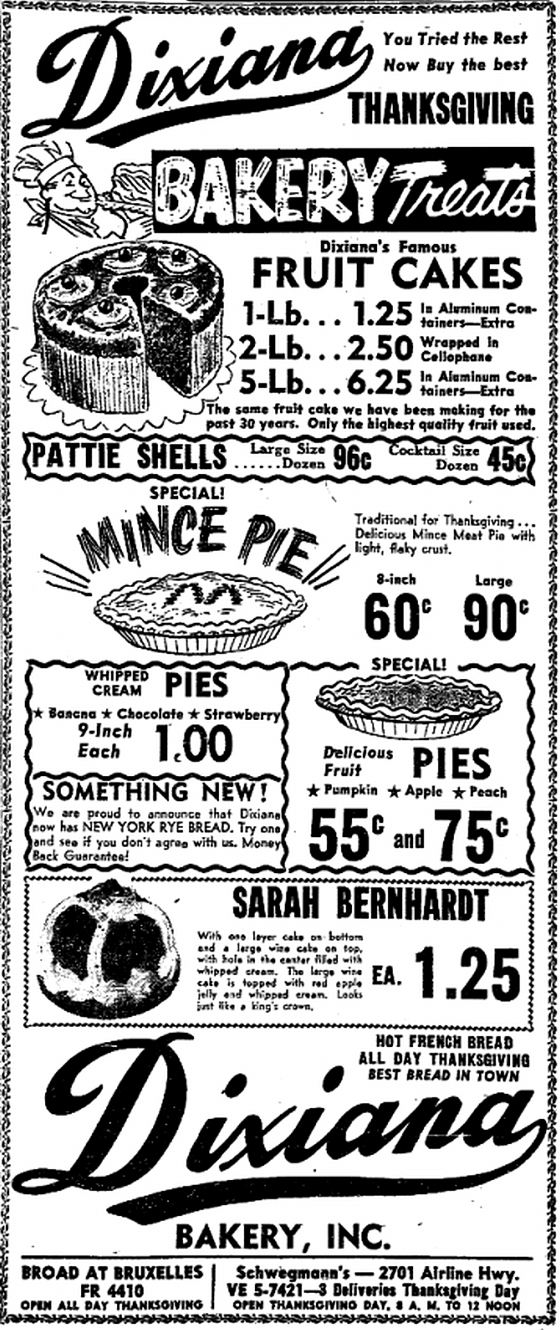|
Today in New Orleans History |
|
|
March 25



 

To receive an update for each day in New Orleans
history, join our facebook page
- Today in New Orleans History
Photo of Leon C. Simon Boulevard at the London Avenue Canal, March 25, 1969. Earhart Boulevard at the South Broad overpass photo, March 25, 1953. [Photograph by Leon Trice] Photo of Tulane Avenue away from river from the California Building. Attached text: Street widening projects form an important part of New Orleans' citywide public improvements program. This photo shows Tulane Avenue, main Northern highway entrance into the city, recently widened to meet increasing traffic needs. In left background is Louisiana Charity Hospital and Tulane and L.S.U. Medical centers. At left is portion of the recently cleared Civic Center area now being temporarily used for public off-street parking. March 25, 1952. [Photography by Leon Trice] (NOPL)
Elk Place photo: new Texas building under construction from California building, March 25, 1952. [Photography by Leon Trice]
Albert Burbank, musician. Born, New Orleans, March 25, 1902. Pupil of Lorenzo Tio, Jr. Started in the 1920s with Arnold de Pass's Olympia Band. In the 1940s and 1950s joined Paul Barbarin at the Mardi Gras Lounge, Octave Crosby at the Paddock, and Kid Ory (q.v.) on the West Coast. Later played with Kid Thomas and Albert French and recorded for the Riverside series. During the early 1970s, a regular at Preservation Hall. Died, New Orleans, August 15, 1976; interred Rest Haven Memorial Park. H.C. Sources: New Orleans States-Item, obituary, August 19, 1976; John Chilton, Who's Who of Jazz … (1972); Samuel B. Charters, Jazz: New Orleans, 1885-1963 (1963); Al Rose and Edmond Souchon, New Orleans Jazz, A Family Album, 3rd ed. (1984). From http://lahistory.org/site19.php The CSS PAMLICO, a side-wheel steamer purchased in New Orleans on July 10, 1861, was placed in commission of the Confederate navy on September 2 with Leutenant W. G. Dozier, CSN in command. She operated in the vicinity of New Orleans, clashing ineffectually with vessels of the Federal blockading squadron on December 4 and 7, 1861, and on March 25 and April 4, 1862. PAMLICO was burned by her officers on Lake Pontchartrain, when New Orleans fell to the Union. On August 2, 1861, the Board of Assistant Aldermen proposed the appointment of a Volunteer Relief Committee to make a
plan for the relief of the families of volunteers in the service of the Confederate Army. This was approved by the Board
of Aldermen on August 7, 1861, as resolution #5726. Prior to this approval the Committee (composed of four members of each
of the two aldermanic boards) met and issued a report on August 5. This report called for an appropriation of $10,000 to
be used for the relief of needy families of volunteers absent or killed in the Confederate service. Special care was to be
taken to insure that only the truly needy were entered on the books. As hostilities progressed the initial funds were apparently
exhausted and the Board of Aldermen, through its Finance Committee, sought new means of assisting the needy families. These
efforts culminated on March 25, 1862 in the creation of a new committee organized on a ward basis to carry
out functions similar to those of the original agency. This new body was called the Committee on Subsistence to Families
of Volunteers. Presumably all such relief activities on behalf of Confederate families came to an end following the capture
of the City by Federal forces. (NOPL)
|
|
|

To receive an update for each day in New Orleans history,
join our facebook page - Today in New
Orleans History.
Analytics |


